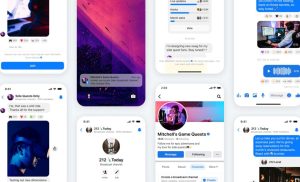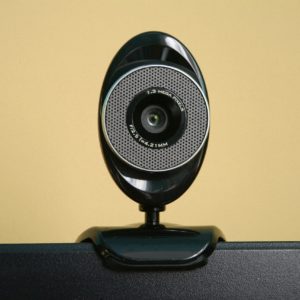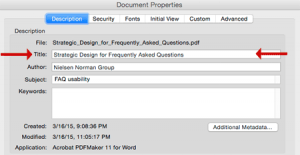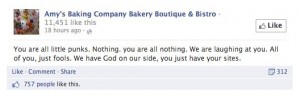 AS THE ECONOMY AND THE JOB MARKET CONTINUE TO IMPROVE, YOU MAY BE AMONG THE CURRENTLY EMPLOYED MEN AND WOMEN WHO ARE NOW READY TO EXPLORE SOME OF THE MANY NEW CAREER OPPORTUNITIES AVAILABLE. Be forewarned, however, that today’s job market remains very competitive, particularly when it comes to the best positions.
AS THE ECONOMY AND THE JOB MARKET CONTINUE TO IMPROVE, YOU MAY BE AMONG THE CURRENTLY EMPLOYED MEN AND WOMEN WHO ARE NOW READY TO EXPLORE SOME OF THE MANY NEW CAREER OPPORTUNITIES AVAILABLE. Be forewarned, however, that today’s job market remains very competitive, particularly when it comes to the best positions.
If it’s been a while since you’ve ventured into the job market, you’re likely in for a few surprises. Many approaches and practices that used to work no longer do. In this post I am going to address five best practices that will not only differentiate you from the vast majority of today’s job-seekers, they can also dramatically improve your chances of landing a new job in today’s job market.[1]
THE INTERNET
The Internet can be (and is) a very valuable tool during a new job search. It is not, however, any longer the panacea it may once have been for finding and landing a new job. There was a time when you could go on the Internet, locate jobs that looked “interesting,” post for them, and often actually get at least some response. Let me assure you, when it comes to the best positions available today, that definitely is no longer the case.
BEST PRACTICE # 1: Use the Internet primarily as a research tool, not as the first, last and only stop on your new job search. The Internet offers unparalleled opportunities to thoroughly research hiring companies, positions available, those who are actually doing the hiring (as well as their contact information), valuable salary information, etc., etc., etc.
As my friend, professional colleague and fellow “headhunter” David Perry, said in the best-selling Guerrilla Marketing for Job Hunters 3.0, “Throughout history there is no record of any person ever being hired by a computer. It’s people who hire people. Yet, some folks spend days or weeks searching for jobs online without ever meeting a hiring authority face to face.”
YOUR RESUME
I’m assuming that you already have a “current” resume. But when is the last time you looked at it, really looked at it? Does it read more like a series of job descriptions than a concise, well-organized presentation of your significant career accomplishments and achievements? Is the focus primarily on what you seek from a potential employer, rather than on what you have to offer an employer? Is there anything about your resume that would possibly give a hiring professional a “cause for pause”? Probably not.
BEST PRACTICE # 2: “Dust off” your “current” resume, read it, then throw it in the nearest wastebasket and create a new, powerful one!
Some things to consider:
- Feature clear, specific information regarding your significant career accomplishments and achievements, making ample use of dollars, percentages and other quantifiable measures to illustrate how you have earned or saved (or both) your current employer money, time, etc. (This is something that will indeed give a potential employer “cause for pause”!)
- Use an inviting design that is easy to read and follow. Use bullet points to highlight accomplishments/achievements. Keep paragraphs short. Use a typeface that is easy to read. Make good use of “white space.”
- Keep it brief, usually one page for most positions.
- Consider hiring a professional resume designer, if you don’t think you have the skills to create a professional-looking resume. It may be prove to be a very worthwhile investment.
YOUR COVER LETTER
Most cover letters attached to a resume are embarrassingly bad and therefore largely useless, totally ineffective. Almost without exception, most cover letters are in every sense of the term “one-size-fits-all.” Most focus exclusively on what the potential candidate seeks and provide not even a hint of what he or she might possibly offer a hiring company.
BEST PRACTICE # 3: If you already have a cover letter, make sure it faces the same fate as your current resume (in the wastebasket). If you don’t have a cover letter for your resume, then create one!
Important considerations when creating/redesigning your cover letter:
- Address the hiring professional by name in the salutation line. Never, never, never use “To Whom It May Concern.” If you’re too lazy to learn the name of the person doing the actual hiring for the position you seek, what do you think the chances are that she will actually read your cover letter?!
- Make sure the focus in the body copy is on what you can do for the hiring company, not on what the company can do for you.
- Sell your candidacy by prominently (and briefly) featuring what you can bring to the table in the body copy. Use bullets and bold face type where appropriate for emphasis.
- Include contact information under your signature line, i.e., phone number(s), email and physical addresses, etc. Do NOT ask the hiring professional to contact you, though. Say that you will be following up soon on your application. If the hiring professional wants to contact you, or if you have indeed given him or her “cause for pause,” be assured that you will be contacted!
YOUR LINKEDIN PROFILE
LinkedIn definitely is the “500-pound gorilla” in today’s professional networking arena. It is very much the “first-stop shop” for the majority of hiring professionals looking for quality candidates to fill available quality positions. So, it’s obvious that, if you’re serious about landing a new, professional position, LinkedIn is the place to be. But just being on LinkedIn is hardly all that’s required.
BEST PRACTICE # 4: Once on LinkedIn make sure you fully develop and implement your online presence, in order to take maximum advantage of what the site offers you.
Some important considerations:
- Fully develop your profile, making maximum use of key words you know potential hiring professionals can be expected to include in their searches for candidates.
- Always include an appropriate picture of yourself with your profile. Remember, when a hiring professional lands on your LinkedIn profile, this is the first time she will “see” you.
- Make sure your contact information is correct and up to date. Few things are more frustrating to a hiring professional than being unable to contact a candidate who gave them “cause for pause.” The usual outcome? The hiring professional simply moves on to the next candidate!
- Begin immediately making “connections” to unleash the FULL power of LinkedIn.
DON’T QUITE UNTIL YOU ‘NAIL IT’
As incredible as it may seem, some job hunters cease all job search efforts and activities if they become “convinced,” absolutely certain, that they are about to get an offer from a hiring company with which they have interviewed. They may be correct in their assumption, but what if they are not? They will have to pick up where they left off in their job search and, chances are, much of the momentum they may have previously generated quite likely will be lost.
BEST PRACTICE # 5: Unless and until you have a bona fide job offer in your hand, do not even think about curtailing your job search activities.
THE ‘COMPETITIVE EDGE’
These five best practices are hardly the only ones to consider implementing in your new job search. They will, however, provide you a solid foundation upon which to build a well-thought-out, well-executed plan to get you where you want to go: Landing NEW, exciting career opportunities!
To be sure, if you do include, at a minimum, these five best practices in your job search, you will automatically stand head and shoulders above the vast majority of your “competition,” others seeking the same position(s) as you. Why? Because most will not include them in their job search. As a matter of fact, most will not even consider including them!
[1] I go into considerable detail on how to design and implement these best practices (and many others!) in both “Headhunter” Hiring Secrets and Career Stalled?
(208)
Report Post








